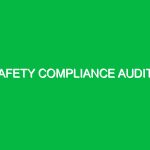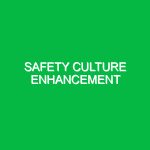Introduction to Health and Safety Risk Management
Health and Safety Risk Management (H&S RM) is a critical component in the Health, Safety, and Environment (HSE) domain. It involves identifying, assessing, and mitigating risks that could potentially harm individuals, property, or the environment. The relevance of H&S RM cannot be overstated; it not only ensures compliance with regulations but also fosters a culture of safety within organizations. In an era where workplace incidents can have devastating impacts—both human and financial—understanding the intricacies of H&S RM is paramount for any organization.
Imagine a construction site bustling with activity. Heavy machinery operates alongside workers carrying out essential tasks. While the environment is dynamic and productive, it is also fraught with risks. A robust H&S RM plan can mean the difference between a safe work environment and a catastrophic incident. This article delves into the various facets of Health and Safety Risk Management, providing insights, real-life examples, and actionable strategies.
Identifying Hazards and Risks in Health and Safety Risk Management
Understanding the potential hazards is the bedrock of effective H&S RM. Hazards can be classified into several categories:
Physical Hazards
Physical hazards include elements that can cause harm without direct contact. For instance, in a manufacturing plant, rotating machinery presents a significant physical risk. Workers must be trained to recognize these hazards and take appropriate precautions, such as wearing personal protective equipment (PPE) like helmets, gloves, and safety goggles.
Chemical Hazards
Chemical hazards arise from substances that can cause harm through inhalation, skin contact, or ingestion. For example, laboratory personnel handling toxic reagents must understand the Material Safety Data Sheets (MSDS) pertaining to each chemical. While working in a lab, I once witnessed a colleague accidentally mix two volatile substances. Thankfully, we had stringent protocols in place, and we swiftly activated the emergency procedures, preventing a potential disaster.
Biosocial Hazards
Biosocial hazards encompass biological agents such as bacteria and viruses. Healthcare settings are particularly susceptible to these risks. During the COVID-19 pandemic, hospitals faced unprecedented challenges in managing these hazards. Implementing rigorous sanitation protocols was essential for safeguarding both healthcare workers and patients.
Ergonomic Hazards
Ergonomic hazards stem from the design of work environments that do not fit the physical capabilities of workers. Poor workstation design can lead to musculoskeletal disorders. A friend who worked in an office once developed severe back pain due to improper seating arrangements. This experience underscores the importance of ergonomic assessments in workplaces.
Psychosocial Hazards
Psychosocial hazards relate to the mental and emotional well-being of employees. Factors such as workplace bullying, excessive workloads, and lack of support can lead to stress and burnout. Organizations must cultivate an environment that promotes mental health, emphasizing open communication and support systems.
Best Practices for Health and Safety Risk Management
Once hazards are identified, the next step is to implement best practices to mitigate risks effectively. Here are several actionable strategies:
Conduct Regular Risk Assessments
Regular risk assessments are vital for identifying new hazards and evaluating existing controls. These assessments should be systematic and involve all stakeholders. Create a checklist to evaluate the likelihood and impact of each risk, and prioritize them accordingly.
Implement Safety Training Programs
Training is a cornerstone of any successful H&S RM initiative. Regular training sessions equip employees with the knowledge to recognize hazards and respond appropriately. For instance, in my previous role at a manufacturing company, we conducted monthly safety drills that included fire evacuation procedures. These drills not only prepared us for emergencies but also reinforced the importance of safety protocols.
Establish Clear Safety Procedures
Having clear, documented safety procedures is essential. Employees should know the protocols to follow in case of an emergency, such as evacuation routes and emergency contact numbers. Visual aids like signage can enhance awareness and compliance.
Encourage Reporting and Feedback
Creating a culture where employees feel comfortable reporting hazards or near-misses is crucial. Implement an anonymous reporting system to encourage open communication. Regularly review feedback to refine safety practices. I once worked at a company where an employee reported a safety concern that led to a significant redesign of a hazardous process, ultimately preventing potential injuries.
Monitor and Review Safety Practices
Safety management is an ongoing process. Regularly review and update safety practices to incorporate lessons learned from incidents and near-misses. Consider using safety performance metrics to track improvements and areas needing attention.
Regulations and Standards Governing Health and Safety Risk Management
Health and Safety Risk Management is governed by a variety of regulations and standards that aim to protect workers and the environment. Familiarity with these regulations is essential for compliance and effective risk management.
Occupational Safety and Health Administration (OSHA)
In the United States, OSHA sets and enforces standards for workplace safety. Employers are required to provide a safe working environment, which includes identifying hazards and implementing safety protocols.
International Organization for Standardization (ISO) 45001
ISO 45001 is an international standard that provides a framework for occupational health and safety management systems. It emphasizes proactive measures to improve safety and reduce workplace hazards.
Local and Industry-Specific Regulations
In addition to federal regulations, local laws and industry-specific standards may apply. Organizations must stay informed of these regulations to ensure compliance. For example, construction companies may have to adhere to specific safety protocols dictated by local building codes.
Conclusion
Health and Safety Risk Management is an essential practice for any organization striving to protect its employees, assets, and the environment. By identifying potential hazards, implementing best practices, and adhering to regulations, organizations can create a safer and more productive workplace.
In my experience, the most effective H&S RM strategies stem from a commitment at all levels of an organization. When leadership prioritizes safety and fosters an inclusive culture, employees are more likely to engage in safe practices. Ultimately, investing in Health and Safety Risk Management pays dividends—not only in compliance but in the well-being of workers and the overall success of the organization.


